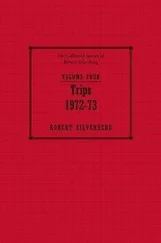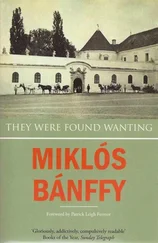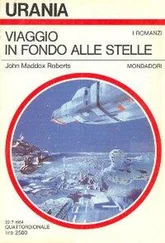‘No sign of Werner’s heavy,’ said Marty, scanning the customers from their window table as he licked raspberry jam off his fingers. ‘He’s betting I’ll take the money and run.’
‘Instead of which… you’re just taking the money.’
‘You’ll get your share.’
‘That’s not what I meant.’
‘No, I guess not. Sorry.’ Marty lit his second Camel of the day. ‘So, where to begin?’
‘How about the beginning?’
‘Easier said than done. But I’ll try.’ Marty pulled out his wallet and fished something small and flimsy from its depths. He laid it in front of Eusden. ‘What do you make of that?’
It was a fragment of an envelope with two stamps stuck to it. The smaller had a king’s head on it beneath the word DANMARK. The larger depicted a ploughman struggling to control his horse as a plane flew overhead. Beneath the ploughman appeared the words DANMARK LUFTPOST. A single postmark covered both: KØBENHAVN LUFTPOST 17.5.27.
‘What am I supposed to make of it?’ Eusden queried.
‘Danish, right?’
‘Obviously.’
‘Twenty-five øre King Christian the Tenth with twenty-five øre airmail supplement. Part of my dad’s collection. I never actually looked through it until he died. I mean, philately? Do me a favour. But ask yourself: where’d he get it from?’
‘No idea.’
‘Yes, you have. Who would a stamp-mad schoolboy cadge something like that off?’
‘His father?’
‘Exactly. Clem.’
‘So, Clem had a letter from Denmark.’
‘Yes. Which he must have hung on to, since Dad was only six years old in 1927. He didn’t get into stamp collecting until his early teens.’
‘OK. But-’
‘Did you know Clem spoke Danish?’
‘What?’
‘Well, spoke might be an exaggeration. But he certainly read it.’
‘You’re having me on.’
‘No. You asked me what’s in the attaché case. The answer is a collection of letters, written to Clem over a period of ten years or more in the nineteen twenties and thirties. In Danish. Now you can see why I couldn’t make head or tail of the contents of the case.’
‘Who were the letters from?’
‘A guy called Hakon Nydahl. Captain – or Kaptajn – Nydahl, as he signed himself. Ever remember Clem mentioning the name?’
‘No.’
‘Nor me. What about Copenhagen? Did he ever admit to going there?’
‘Not sure. There weren’t many European cities he didn’t claim to have visited at some point.’
‘True. But we know he was corresponding with someone in Copenhagen, so it seems a good bet, doesn’t it? As to what they were corresponding about , you’d need a Danish translator to tell you that. Werner’s probably contacting one even as we speak.’
‘Why’s it so important?’
‘Ah, that brings us to Werner’s father: Otto Straub. Thanks to him we know Clem came to Hamburg in the spring of 1960. It’s not something I ever remember my parents talking about. Maybe he didn’t tell them where he was going, or even that he was going. But yes. Clem was here. And why? To testify in a court case Otto was covering for his paper. Clem let us believe he came just after the War, if you remember, before he retired from the police. But that was eyewash. He’d have been seventy-three in 1960.’
‘What was the court case about?’
‘Anastasia.’
‘Sorry?’
Marty chuckled. ‘You heard.’
Anastasia. A legend in her own death-time. Eusden knew what history said of her. Born 1901, fourth and youngest daughter of Tsar Nicholas II. Murdered by Soviet revolutionaries in 1918, along with her parents and siblings. He also knew of the persistent legend that she had survived the climactic massacre at Ekaterinburg. A woman claiming to be Anastasia popped up in Berlin a few years later and spent the rest of her life convincing many and failing to convince others, notably most of Anastasia’s surviving relatives, that she was indeed Her Imperial Highness the Grand Duchess Anastasia Nikolaievna. Opinion was still divided when Anna Anderson, as the woman came to be known, died in 1984. But it hardened in the 1990s, when the remains of the imperial family were excavated from their burial site near Ekaterinburg and verified by DNA analysis, a test which Anna Anderson’s remains subsequently failed. Seventy years’ worth of books, films, lawsuits and conspiracy theories foundered on a simple matter of genetics. The claimant to Anastasia’s identity was found to have been a fraud.
This much Eusden remembered, though he was aware there was also much more he had forgotten. He had read a book on the subject, seen a couple of television documentaries purporting to tell the full story, flicked through several magazine articles probing the mystery and scanned various newspaper reports of twists and turns in the affair. He well recalled swapping theories with Marty after they had speed-read a sensationalist work called The File on the Tsar, published while they were at Cambridge, even though he could not recall what those theories were. Their interest had been heightened by Clem’s airy claim to have met Anastasia – the real Anastasia – during his brush with the Russian imperial family in Cowes in August 1909. He had supposedly visited the imperial yacht to receive the thanks of the Tsar and Tsarina for saving their eldest daughters, Olga and Tatiana, from assassination and Anastasia had briefly spoken to him. ‘A forward little girl’, was his later summation. She would have been eight years old at the time, so perhaps it was not surprising he had no more to say about her than that.
But perhaps, Eusden was now forced to consider, Clem’s dismissive attitude was a smokescreen. It was otherwise hard to account for his presence in Hamburg in the spring of 1960 as a witness in Anna Anderson’s civil action for recognition as sole surviving child of the last Tsar of All the Russias.
‘I had no idea trying to find out who Clem’s mysterious Danish pen pal was would lead to Anastasia,’ said Marty as he lit a third Camel from the end of the second. ‘I was just looking for something to take my mind off… well, death, frankly; specifically, my own. Anyway, I went to Copenhagen to get the goods on Hakon Nydahl. He was a Danish naval officer who graduated to a number of confidential court appointments. Gets a shortish write-up in the Danish DNB. Born 1884, which makes him just a few years older than Clem. His bit-part in history comes in 1920, when the Tsar’s mother, the Dowager Empress Marie Feodorovna, arrived back in her native Denmark, where she was known by her original Danish name, Dagmar. She’d been in the Crimea when the Soviets started rounding up royals after the October Revolution and was evacuated on a British warship. Her sister was Edward the Seventh’s widow, Queen Alexandra. After staying with her for a while, Dagmar headed for Copenhagen and moved into a house in the seaside resort of Klampenborg, which she and Alexandra kept as a holiday home. King Christian the Tenth, her nephew, appointed Nydahl to manage her affairs. And that’s what he did, dutifully and diligently, until her death in 1928. Anna Anderson had gone public with her claim to be Anastasia by then, but Dagmar dismissed her as an impostor without even bothering to meet her. There’s not much more to say about Nydahl, if you trust the official accounts. He died a bachelor in 1961, aged seventy-seven.’
‘How come he was in touch with Clem, then?’ asked Eusden, when no explanation was immediately forthcoming.
‘That’s what I wondered, obviously. There’s no apparent connection. But clearly there was one. Why else would Clem go to the bother of learning Danish?’
‘Why would he anyway? A courtier like Nydahl must have spoken English.’
Читать дальше












